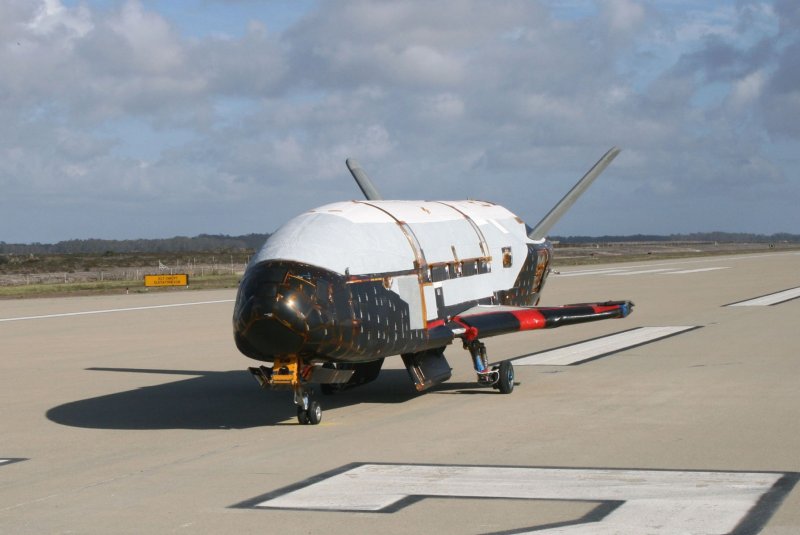In a testing procedure, the X-37B Orbital Test Vehicle taxis on the flightline March 30, 2010, at the Astrotech facility in Titusville, FLa. The plane was launched Wednesday, May 20, 2015, aboard an Atlas V rocket. Courtesy photo by U.S. Air Force/UPI
CAPE CANAVERAL, Fla., May 20 (UPI) -- A United Launch Alliance Atlas V 501 rocket successfully blasted-off into space on Wednesday morning, carrying with it a secret space plane and a solar sail space vessel. The rocket launched at 11:05 a.m. EST from Cape Canaveral.
At last update, ULA confirmed that the rocket's stage 1 engine had successfully shut off, and that stage separation performed nominally.
The small solar sail-powered spacecraft, dubbed LightSail, is an effort by the nonprofit group Planetary Society to harness the power of solar radiation for the purpose of space travel. The sail will propel a small craft known as a cubesat -- essentially a small square satellite, roughly the size of a toaster oven.
Cubesats are primarily used for research purposes, but because of their size, they don't necessitate the full power of a rocket. That's why they typically hitch a ride. But for those who finance larger rocket payloads, the risk of a row of tiny fuel tanks tagging along isn't normally welcome.
"That's what's kind of kept cubesats limited thus far," Jason Davis, a digital editor at The Planetary Society -- the organization headed by Bill Nye "The Science Guy" -- told Space.com. "So we're trying to show that solar sailing is one way that you can have sort of free propulsion, which could conceivably take cubesats to the next level."
If the fuel-less cubesat is the hitchhiker, the paying passenger for this launch is the U.S. Air Force. Their top secret space plane, the X-37B, is also now headed for space. Little is known about the space plane, as it is a classified asset, but it is assumed the plane will engage in a series of experimental reconnaissance missions.
The LightSail isn't the only cubesat joining the space plane aboard the the ULA Atlas V rocket. Pods aboard the rocket will deploy ten total cubesats once the rocket breaches the upper atmosphere and enters space.
Roughly three or four weeks after deployment, the LightSail cubesat will unfoil a sheet of super-light metallised film called Mylar that will extend over 322 square feet. The sail's deployment must wait until each cubesat has time to drift apart in space.
The effort was partially funded by crowd-sourced Kickstarter campaign.
"Mostly it was people who just think it's cool," Nye told USA Today. "They want to participate in space exploration."















